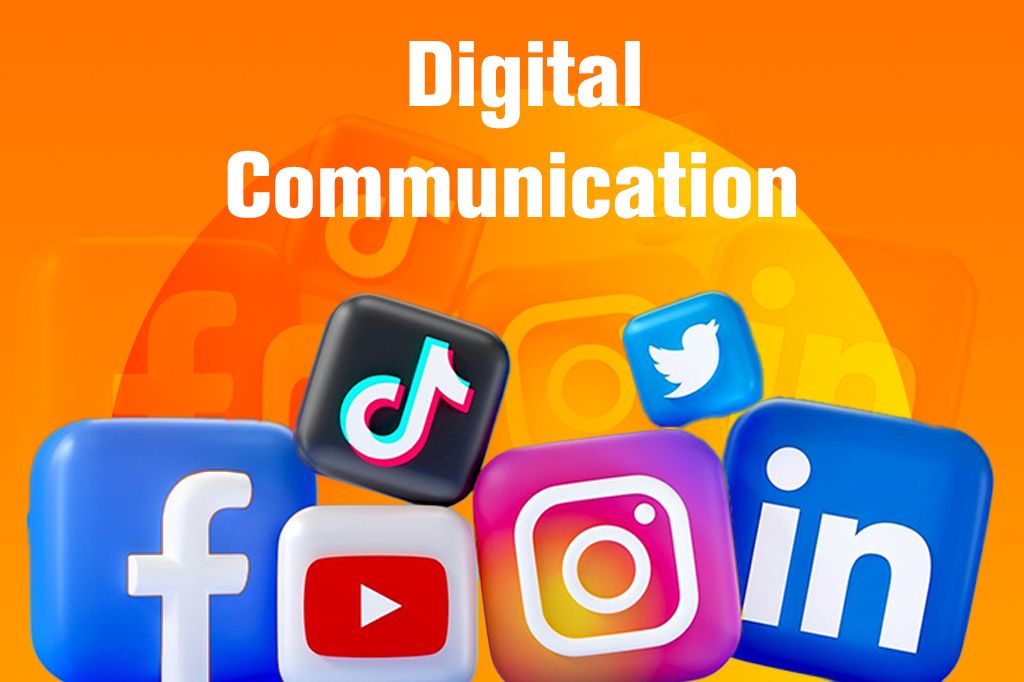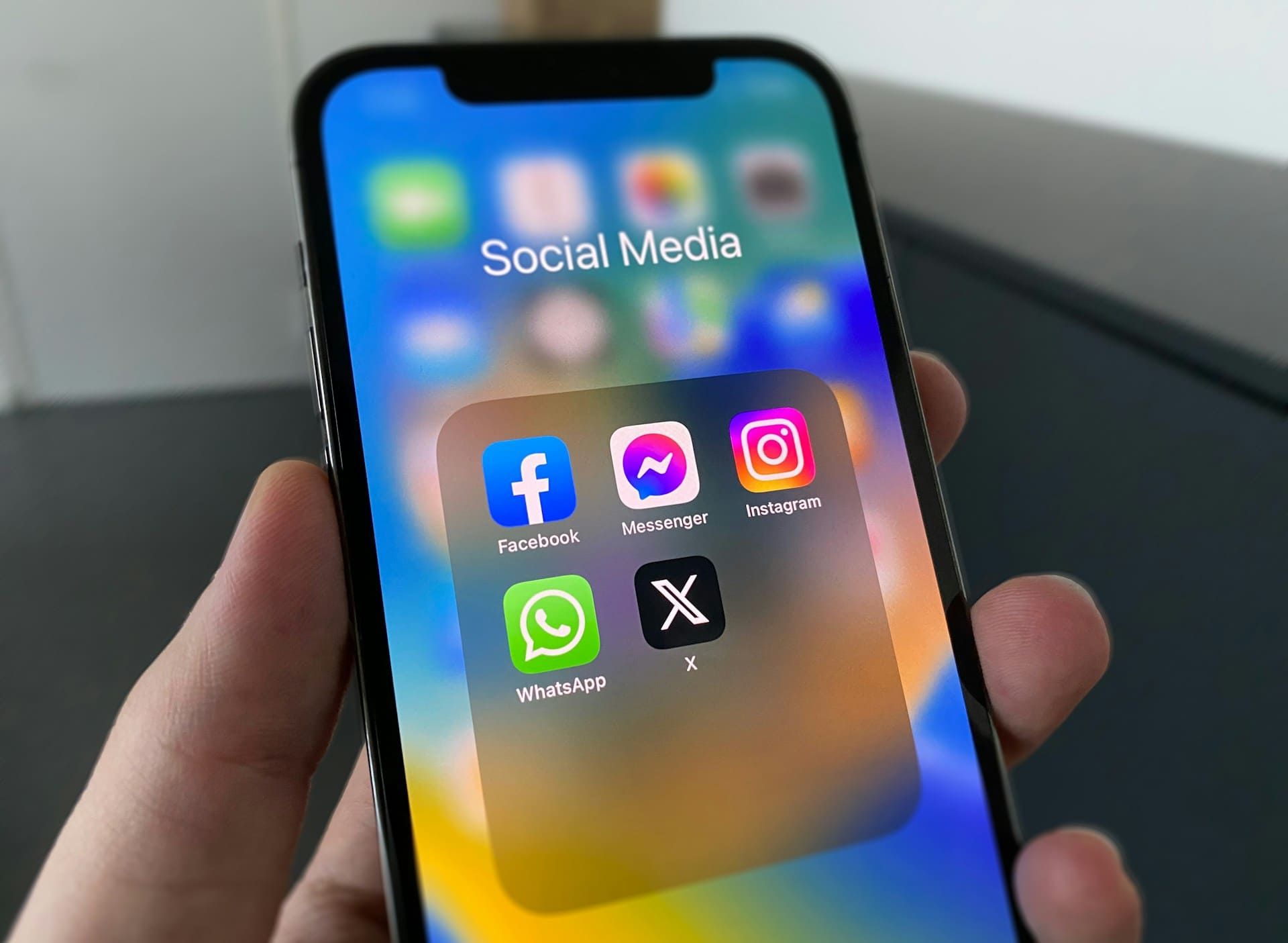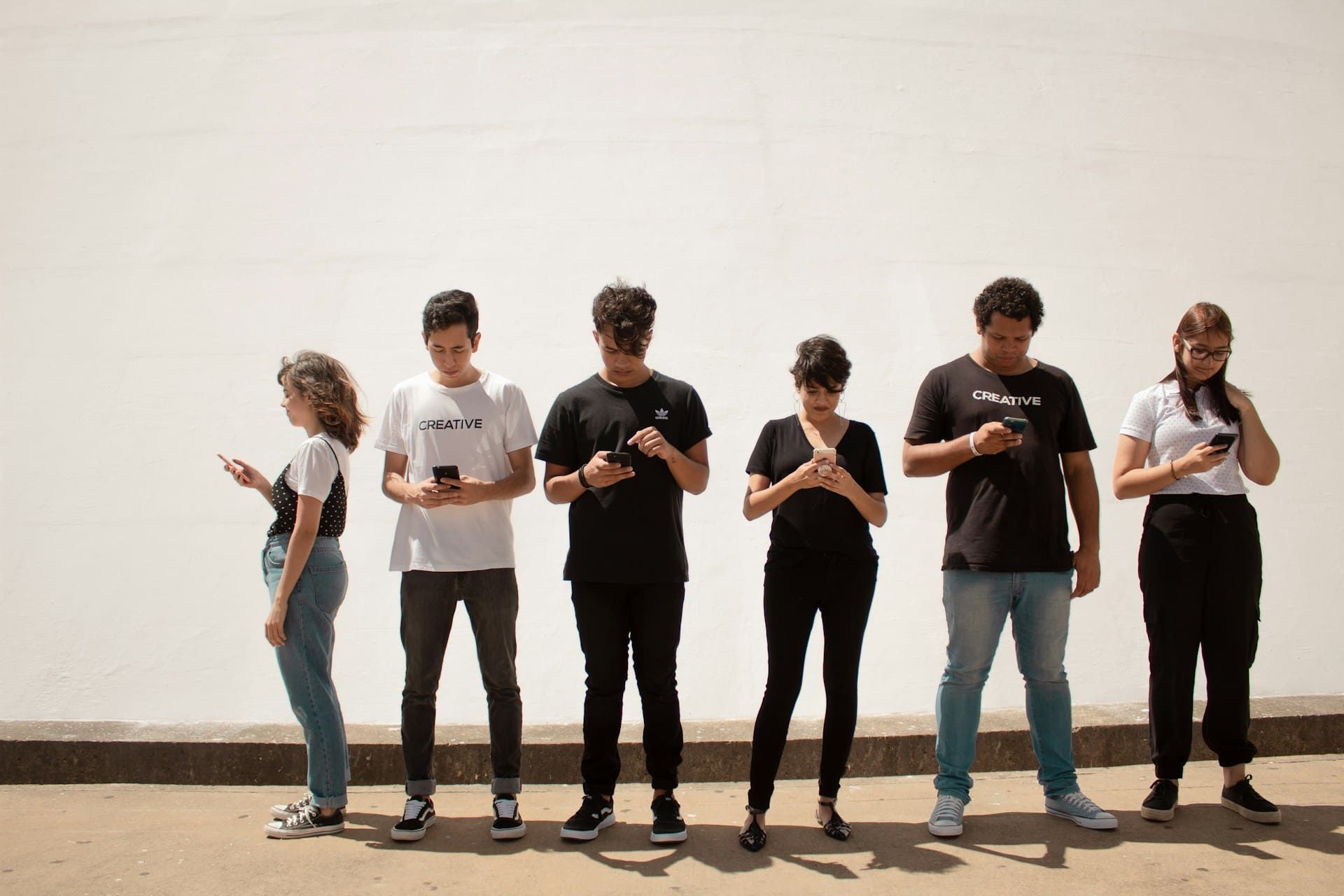デジタルコミュニケーションは、私たちの生活と交流の方法を変革しています。物事はより速く動き、つながりを維持することがノンストップになりました。接続を切断することが難しくなり、これらすべてのツールは、私たちの働き方、交流の仕方、さらには考え方に影響を与える方法で融合しています。
これは単なる一時的な技術トレンドではありません。これは大きな変化です。最近デジタルコミュニケーションが以前と違うと感じているなら、それは間違いではありません。このガイドでは、デジタルコミュニケーションがどのように進化しているか、そしてそれがあなたの未来にとって何を意味するかを詳しく解説します。

写真提供 Mariia Shalabaieva(Unsplash)
デジタルコミュニケーションとは?
デジタルコミュニケーションとは、デジタルデバイスを介してオンラインまたは電子チャネルを使用して情報を交換することを指します。これには、メールやテキストメッセージのような書面形式、ビデオ通話や音声メモのような音声形式、そしてチャットサイドバー付きの画面共有会議のようなハイブリッド形式が含まれます。
今日最も一般的なデジタルコミュニケーションのタイプは以下の通りです。
-
テキストメッセージ(SMSなど): 電話に送られる短いダイレクトメッセージ。迅速なアラートや個人的なメモに最適です。
-
Eメール: ビジネス、文書作成、ファイル共有のための公式で詳細なコミュニケーション。
-
ソーシャルメディアの投稿とプライベートメッセージ: 公開エンゲージメントまたはダイレクトメッセージに使用されます。プラットフォームによってカジュアルまたはプロフェッショナルになります。
-
ビデオ通話(ZoomやMicrosoft Teamsなど): オンラインでのライブ、対面式の会話。会議、面接、またはチームコラボレーションに最適です。
-
チームワークアプリ(SlackやGoogle Driveなど): グループコミュニケーションとファイル共有のためのツール。チームがリアルタイムまたは各自のスケジュールで協力するのを助けます。
-
チャットボットとAIツール: 質問に答えたりタスクを手伝ったりする自動化されたシステム。顧客サービスや情報検索に役立ちます。
-
オンラインウェビナーとバーチャルイベント: トレーニング、プレゼンテーション、またはグループ学習のためのライブまたは録画されたセッションで、多くの場合インタラクティブです。
-
3Dビデオ通話(ホログラムと5Gを使用): より没入感のあるコミュニケーションのための最先端技術。まだ開発途上ですが、現実のようなバーチャルプレゼンスを提供します。
拡張現実(AR)、仮想現実(VR)、ブロックチェーンのような新しい技術も、デジタルでコミュニケーションをとるよりインタラクティブな方法を生み出しています。これらは基本的なテキストやビデオを超え、より没入感のある体験を生み出します。

写真提供 Julian Christ(Unsplash)
いつ、何を使うか?
| チャネル | 最適な使用例 | フォーマルさ | 応答速度 | 同期タイプ |
|---|---|---|---|---|
| Eメール | ファイル共有、公式アップデート | フォーマル | 遅め–中程度 | 非同期 |
| メッセージアプリ | クイックチームチャット、チェックイン | カジュアル | 速い | 同期 |
| ソーシャルメディア | 公開エンゲージメント、告知 | 両方 | 速い | 両方 |
| VoIP/ビデオ会議 | 会議、プレゼンテーション | フォーマル | 即時 | 同期 |
| チャットボット/AIアシスタント | ルーチンな質問、基本的なサポート | フォーマル | 即時 | 同期 |
| SMS/プッシュ通知 | アラート、リマインダー | フォーマル | 即時 | 非同期 |
デジタルコミュニケーションの利点
-
速く、安く、使いやすい: デジタルツールを使えば、どこにいてもメッセージ、ビデオ通話、Eメールで瞬時に話すことができます。印刷、郵送、会議のための移動よりもはるかに安価です。そして、インターネットアクセスがあれば、支援技術を使用している障がいのある人も含め、誰でも参加できます。
-
世界中、いつでも接続: 国やタイムゾーンを越えて遅延なくコミュニケーションできます。メッセージは都合の良い時に読まれ、返信されるため、同じ場所にいなくてもチームが円滑に協力するのを助けます。
-
何が効果的かを追跡、パーソナライズされたインタラクション: デジタルプラットフォームは、誰があなたのメッセージを開いたか、リンクをクリックしたかなどのリアルタイムデータを提供するため、その場でアプローチを調整できます。チャットボットやAIなどのツールは、迅速でパーソナライズされた応答を提供でき、顧客サービスとマーケティング成果を向上させます。
-
環境に優しい: オンラインでメッセージを送ることは、紙を使わず、印刷もせず、移動も不要であり、廃棄物や汚染を削減します。これは、持続可能性目標達成に役立つより環境に優しい選択肢です。
-
リモートワーク、顧客サービス、成長をサポート: デジタルツールはリモートチームの円滑な協力、CRMと自動化による顧客サポートの向上、物理的なオフィスなしでのグローバル展開を可能にします。
世代を超えたデジタルコミュニケーション
異なる年齢層は、育った環境によって独自のやり方でテクノロジーを使用しています。
-
ベビーブーマー(1946年~1964年): 電話やEメールを好みます。明確で公式なコミュニケーションを好み、主にFacebookで連絡を取り合います。多くの人がまだ新しいデジタルツールに慣れようとしています。
-
ジェネレーションX(1965年~1980年): 電話、Eメール、メッセージングを組み合わせて使用します。古い技術と新しい技術の両方に慣れており、柔軟性を重視します。
-
ミレニアル世代(1981年~1996年): インターネットと共に育ちました。テキストメッセージ、ソーシャルメディア、ビデオ通話を頻繁に使用します。仕事や個人的な使用にはSlackやWhatsAppのようなアプリが一般的です。
-
ジェネレーションZ(1997年~2012年): 完全にデジタル化された世界で育ちました。TikTokやSnapchatのようなプラットフォームで、絵文字、ミーム、スラングを使った素早く視覚的なメッセージを好みます。迅速な返信を期待し、常にメッセージングを使用しています。
なぜ今、それがこれまで以上に重要なのか
デジタルでコミュニケーションする方法を理解することは、これまで以上に重要です。その理由は以下の通りです。
-
チームは異なる場所やタイムゾーンで働いています。Microsoft TeamsやGoogle Driveのようなツールは、彼らが整理され、ファイルを共有し、全員が同じ情報を共有するのを助けます。
-
デジタルコミュニケーションは、特に直接会えない場合に、家族や友人と連絡を取り合うのを助けます。ソーシャルメディアやビデオ通話は、人生の最新情報を共有し、つながりを維持することを容易にします。
-
企業はデジタルコミュニケーションに依存して、顧客と話し、質問に答え、サービスを宣伝しています。また、オンラインでより多くの人々にリーチすることで、成長を助けています。
-
オンラインツールは、学生と教師がどこからでもつながり、資料にアクセスし、プロジェクトで協力することを可能にします。
-
デジタルコミュニケーションは、情報を迅速に共有し、物事をより速く行い、生産性を維持することを容易にします。
要するに、デジタルコミュニケーションは今や、自宅、職場、学校、そしてその先でも日常生活の一部となっています。技術が進歩し続けるにつれて、その役割はさらに大きくなるでしょう。
電信からAIへ:デジタルコミュニケーションの進化
コミュニケーション技術は大きく進歩しました。1800年代の電信から始まり、人々はワイヤーを使って遠距離にメッセージを素早く送信できるようになりました。次に、1900年代半ばにコンピューターが登場し、情報をより速く処理できるようになりました。
1960年代後半には、ARPANETというネットワークを通じてインターネットが形成され始めました。これにより、コンピューターが世界中で互いに通信できるようになりました。1980年代から1990年代にかけてEメールが普及し、コミュニケーションはさらに速くなりました。
次に、1990年代にテキストメッセージ、AIM、ICQの台頭により、メッセージングはより迅速かつパーソナルになりました。2000年代から2010年代にかけては、スマートフォンやWhatsApp、WeChatのようなアプリにより、人々はいつでもどこでもメッセージ、写真、ビデオを送信できるようになりました。
現在、人工知能(AI)、仮想現実(VR)、拡張現実(AR)は、スマートなチャットボット、リアルタイム翻訳、没入感のある仮想空間を使用して、コミュニケーションの方法を再び変えています。
私たちはもはや言葉だけに頼っているわけではありません。絵文字、ミーム、ビデオは、自己表現の大きな部分を占めるようになりました。絵文字は、幸福や皮肉のような感情を示すのに役立ちます。ミームや短いビデオは、しばしば長いテキストよりも多くのことを伝え、共感しやすく共有しやすいです。私たちの脳は言葉よりも画像を速く処理するため、現代のコミュニケーションはテキストと写真、ビデオ、シンボルを組み合わせています。
社会、文化、新しいデジタル言語
最近、絵文字は至る所にあります。言葉を使わずに、気分を示したり、反応したり、あるいは雰囲気を和らげたりするのに役立ちます。視覚的なため、異なる言語で機能し、トーンを伝えやすくします。
しかし、オンラインで話すとき、私たちはコミュニケーションを人間らしく感じさせる多くのもの、例えば声のトーン、顔の表情、ボディランゲージなどを失っています。それらがないと、メッセージが時に間違って伝わったり、少し平坦に感じられたりすることがあります。そして、自分を表現するためにデジタルツールに頼りすぎると、特に真剣なまたはプロフェッショナルな会話で、現実の世界でのつながりが難しくなるかもしれません。

写真提供 Creative Christians(Unsplash)
未来は事実上ここにあります
コミュニケーションがどこへ向かっているかについて話しましょう。人工知能、仮想環境、常時接続デバイスによって動かされるコミュニケーションの新しい時代に入っています。しかし、テクノロジーが私たちの接続方法を変える一方で、自動化された世界で人間らしさを保つという課題も突きつけています。
AI搭載のメッセージングツールとアシスタントは、日々の相棒になりつつあります。アポイントメントのスケジュール設定、受信箱の管理、顧客サービスの処理、さらにはコンテンツ作成も可能です。Microsoft Copilot、ChatGPT、Alexaなどを考えてみてください。これらはすでに人々がEメールを書いたり、会議を整理したり、家を管理したりするのを手伝っています。2025年には、これらのツールはさらに直感的になり、より意味のある会話のために私たちの時間と注意を解放するでしょう。
リモートワークとデジタル会議は今後も続くでしょうが、大幅にアップグレードされています。仮想現実とホログラフィック会議技術は、標準的なビデオ通話を没入感のある3D体験に変えています。同僚がテーブル越しに座っているホログラムである仮想空間に足を踏み入れるのを想像してみてください。これはもうSFではありません。それは明日のチームがどこからでもより自然に協力する方法です。
そして、私たちのデバイスが賢くなるにつれて、接続を維持することはより簡単になります。ウェアラブルデバイスとeSIM搭載デバイスは、バックグラウンドでネットワークを切り替え、考えなくてもオンライン状態を維持します。リスボンのカフェで作業している場合でも、タイムゾーン間を移動している場合でも、Yoho eSIMsのようなツールは、楽に接続状態を維持するのに役立ちます。
旅行中も接続を維持したい場合は、Yoho Mobileの無料eSIMトライアルをお試しください。ほとんどの国でモバイルデータに即座にアクセスできます。SIMカード不要、契約不要—迅速な設定だけで、数分でオンラインになります。その後eSIMプランを取得したい場合は、チェックアウト時にコードYOHO12を使用して12%の割引を受けてください!
コミュニケーションの未来は、単にオンラインであることだけでなく、国境を越えて移動し、働き、生活する自由であることです。
先読み:10の大胆な予測
10年先を早送りしてみましょう。日々のコミュニケーションはどのように見えるでしょうか?
-
AIネイティブのコミュニケーションツールがデフォルトになるでしょう。
-
Eメールは社内コミュニケーションでは衰退するでしょうが、社外/公式な使用では依然として主要な手段です。
-
非同期優先文化が9時から5時の規範に取って代わるでしょう。
-
グローバル協力規範(タイムゾーンの透明性、多言語AI)が拡大するでしょう。
-
音声およびビデオの文字起こしはリアルタイムで検索可能になるでしょう。
-
AIによるトーン、声、アシスタントスタイルの超パーソナライズ。
-
デジタルボディランゲージトレーニング(一時停止、入力インジケーター、絵文字の流暢さの読み取り)。
-
ハイブリッド会議には組み込みのAIモデレーターがつくでしょう。
-
従業員コミュニケーション「契約」(例:「午後6時以降のSlackは禁止」)が標準になるでしょう。
-
ゴースティング、ミュート、メッセージスレッドに関する新しいエチケットが登場するでしょう。
よくある質問
デジタルコミュニケーションは本当に燃え尽き症候群につながる可能性がありますか?
はい、つながる可能性があり、多くの人にとってそうです。労働者の約60%は、常にEメール、チャット、通知をやりくりすることに燃え尽きを感じていると言われています(Cerkl)。特に「常にオン」でなければならないと感じる場合、ついていくのは疲れるものです。リモートワーカーやハイブリッドワーカーは、これをより強く感じることがよくあります。ストレス、不安、さらには重要な情報を見逃すことへの恐れ(FoMO)などが積み重なります。デジタルコミュニケーションが適切に管理されていない場合、ワークライフバランスと全体的な幸福を損なう可能性があります。
私たちはスモールトークの仕方を忘れていますか?
ある程度、はい。私たちのコミュニケーションの多くがオンラインで—あるいはAIを通じて—行われているため、手短で要点を押さえたメッセージが主流になっています。人々はカジュアルな「調子はどう?」をスキップして、すぐに本題に入ります。しかし、そうした小さなチャットは重要です。それらは私たちがつながり、認められ、社会的な状況に溶け込むのを助けます。世代によってコミュニケーションの仕方も異なります。若い人たちは対面式の会話よりもテキストメッセージやソーシャルメディアを好むことが多いです。スモールトークが薄れるにつれて、つながりの感覚も薄れる可能性があります。
AIメッセージングの倫理について心配すべきですか?
注意が必要です。AI駆動のメッセージングはいくつかの大きな問題を提起します:誰があなたのデータを収集していますか?応答は公正で偏りがないですか?AIが誤った情報を広めたり、有害な目的で使用されたりしたらどうなりますか?これらのシステムはしばしば偏ったデータから学習し、間違いを犯す可能性があります。さらに、何かがうまくいかなかった場合に誰が責任を負うのかが常に明確ではありません。より強力な規則と透明性が整うまで、AIがどのように使用されているかについて情報を得て批判的であることが良い考えです。
デジタルでの会話のプライバシーを保つにはどうすればいいですか?
いくつか選択肢があります。まず、SignalやWhatsAppのようなエンドツーエンド暗号化を備えたアプリを使用します。アカウントの二段階認証(2FA)をオンにします。個人的な情報を過度に共有せず、公共のWi-Fiを使用する場合はVPNを使用します。ソフトウェアを最新の状態に保ち、パスワードを強く(そして異なるものに!)設定します。また、あなたのプライバシーを尊重し、データの使用方法を明確にしているプラットフォームに固執します。
デジタルコミュニケーションが時に抑制が効かないと言われるのはなぜですか?
それは、人々が対面では言わないようなことをオンラインで言うことが多いことを意味します。これはオンライン脱抑制効果と呼ばれ、画面の裏に隠れることができるために起こります。ボディランゲージ、アイコンタクト、そしてしばしば即時のフィードバックがありません。そのため、人々はより大胆になり、良い意味で(より正直な共有)、悪い意味で(失礼、荒らし)の場合があります。
対面コミュニケーションは死んだのですか?
いいえ。より意図的なものになりました。チームは直接会う頻度は減りましたが、より目的を持って(オフサイト、ワークショップ、1対1など)会っています。
絵文字は非プロフェッショナルですか?
文脈が重要です。Slackでは、👍や😊は明確さを向上させ、誤解を減らすことができます。法務または顧客文書では?おそらく違います。
コミュニケーションが多いほど、より良いコミュニケーションということですか?
常にそうとは限りません。メッセージが多いことは混乱を示唆する可能性があります。効果的なコミュニケーションは、質、明確さ、頻度のバランスをとります。
